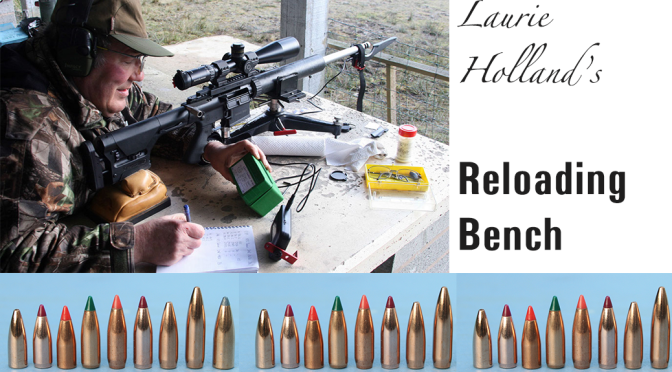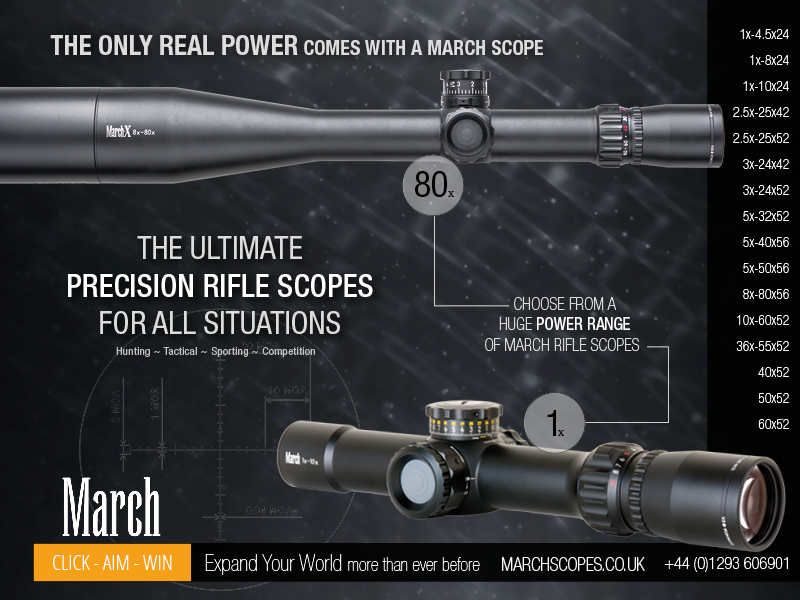I can still remember the first time I saw a ‘six-point-five’ close up. It was nearly 40 years ago and I shot old military bolt actions in Historic Arms exclusively at the time: 303, 30-06, and 7.92 examples. A Mauser enthusiast and part-time RFD brought a then rare 6.5X55mm Swedish M1896 rifle to the range one Sunday along with some military ball ammo. I was immediately taken by the immaculate long rifle with its straight bolt handle, also much intrigued by the cartridges with their long pencil thin round-nosed bullets protruding far out of the cases.
The owner was offering mint refurbished, possibly even brand new and never issued rifles, for the grand sum of £55, somewhat cheaper than an Enfield No.4 and much less than a Gewehr ’98 in equivalent condition. He got no immediate buyers though – thanks to the absence of cheap surplus ammo with fewer people handloading back then. I bought my first 6.5 a few years later, an as new Parker-Hale M81 sporting rifle also in 6.5X55mm, and I’ve never been without something in the calibre subsequently using one or other of five cartridge designs.
Swede?
Thanks to the 6.5X55mm and its common name of ‘Swedish Mauser’ (it was a joint Swedish / Norwegian military development truth to tell), not forgetting first rate Lapua, Norma and Sako ammunition and components, many associate the 6.5s with Scandinavian countries. However, the two Nordic nations weren’t alone in adopting 6.5mm designs during the back end of the 19th century, moreover Germany and Austria did as much to popularise the calibre. The Netherlands, Italy, Japan, Romania, Portugal and Greece took the small calibre military route too, although some later decided to convert at least partially to larger bores.
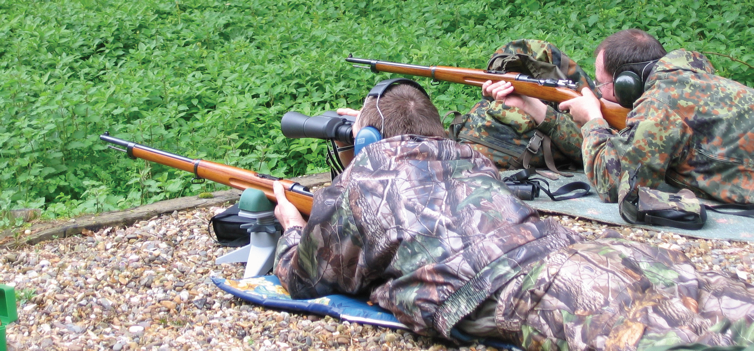
The unsuccessful 6mm Lee US Navy aside, 6.5mm was the military ‘sub-calibre’ of this pre Great War era with regard to full-power cartridges, many ordnance officers convinced it was a step too far in downsizing bore diameters. The primitive fast burning powders of the time could only just cope with anything under 7mm and were best suited to .30/8mm numbers.
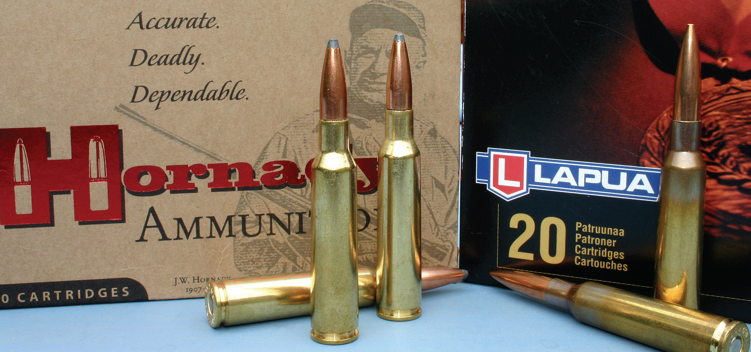
These early models had cases ranging from 50mm length (‘Arisaka’, Japan) to 58mm (‘Vergueiro’, Portugal), ran at very modest pressures by today’s standards and propelled 140-162gn RNFMJs to 2300-2450 fps out of 29-inch barrelled infantry rifles. We’d regard their ballistics as distinctly mediocre but, they were a step above those of the contemporary competition, equally blunt and still lower BC 200-225gn .30 or 8mm bullets at 2050-2250 fps. 6.5s were flatter shooting, retained more velocity at long ranges and produced less recoil (an important consideration in an era of huge conscript armies and vast numbers of reservists who only got to fire a rifle maybe once a year).
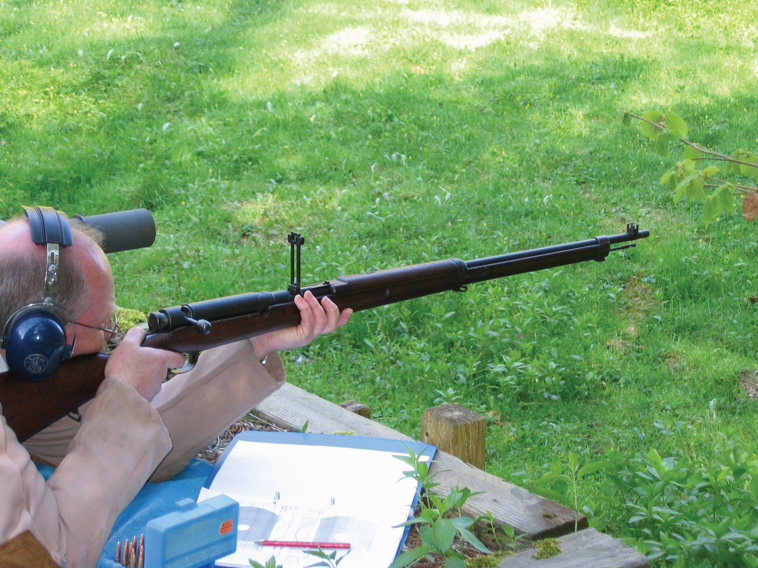
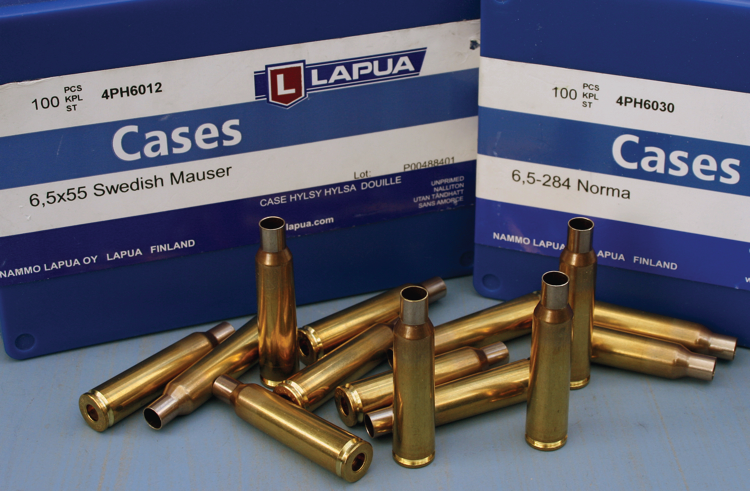
However, once armies started to adopt lighter pointed bullets at improved velocities in the .30-class designs starting with the German 7.92mm 153gn bulleted S-Patrone of 1905 which produced the then astonishing MV of 2900 fps in the G’98 rifle, the 6.5s lost out as contemporary propellants couldn’t handle smaller calibres as efficiently. It’s significant that while some early users moved to larger calibre service rifles, no country has adopted 6.5mm in the last 110 years although there have been some unsuccessful initiatives recently.
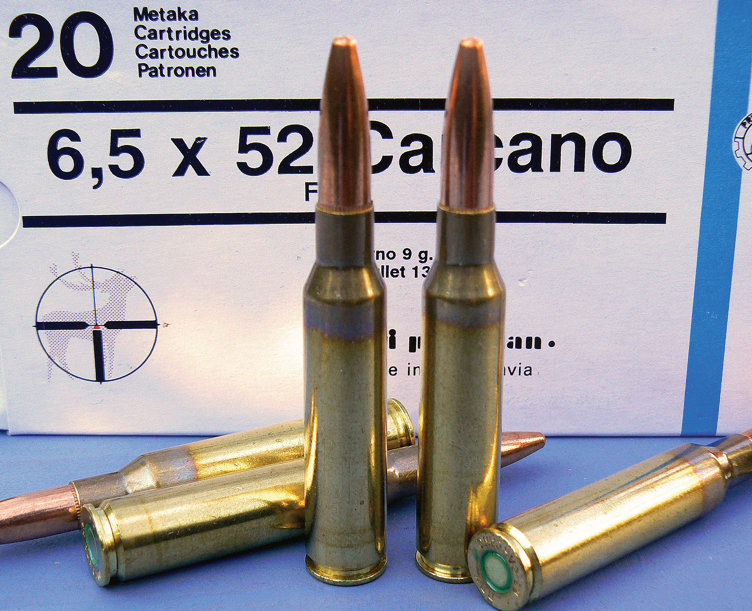
Two interesting sporting rifle developments came out of this period. Having designed and started production of the M1903 Mannlicher action with its superb rotating spool magazine as a military number for Greece and an accompanying rimless version of the 6.5X53R cartridge (usually referred to as the 6.5X54mm to distinguish between the pair), Steyr promptly refined the combination into a gentleman’s deerslayer. The enduring 6.5X54 Mannlicher-Schönauer duo has since been used worldwide to kill almost anything under the sun, even including its employment by some professional elephant hunters early in the century (short-range brain shots with 160gn ‘solids’).
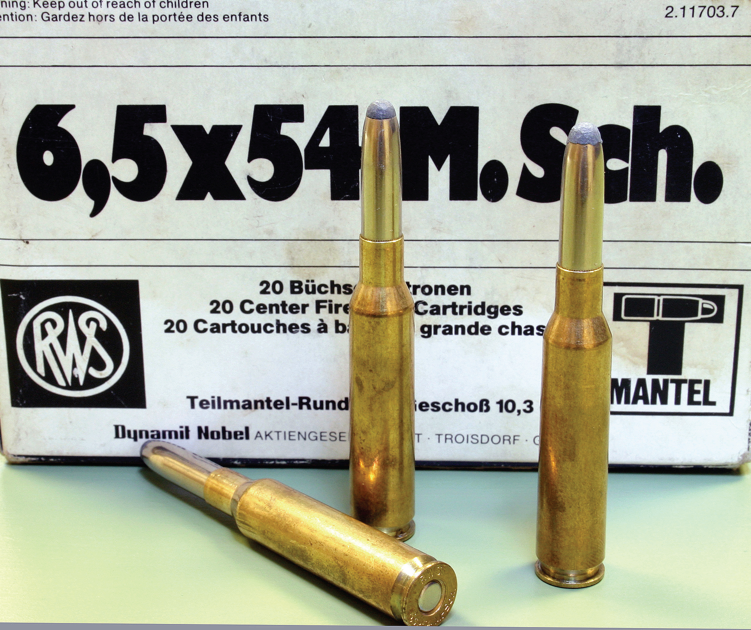
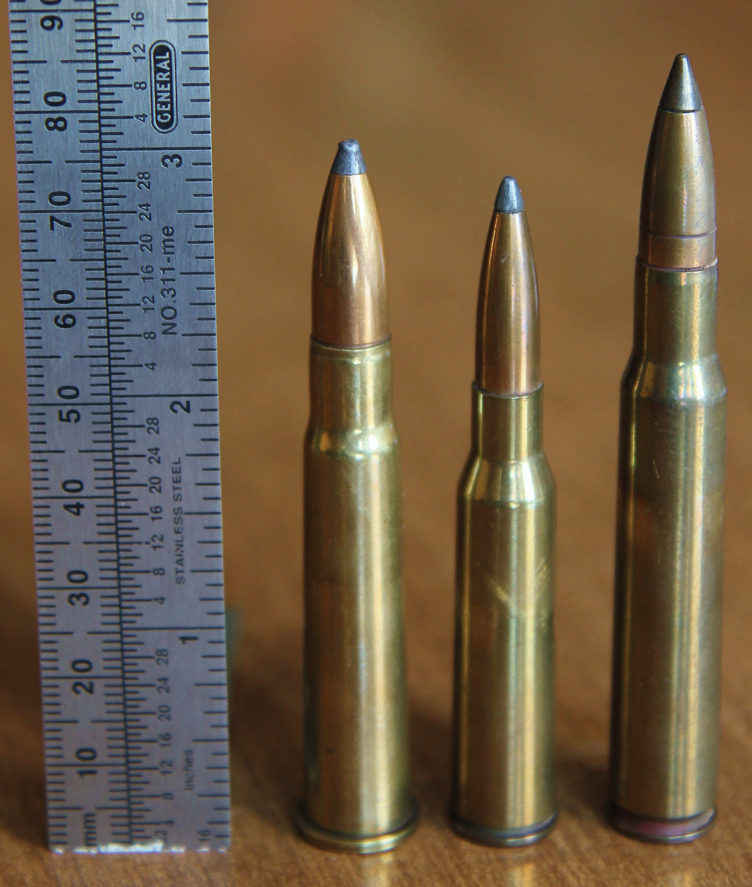
Next door in Germany, somebody necked the 7X57mm Mauser case down to produce the 6.5X57mm, a popular sporting number there and, still around today over 100 years later. RWS and others introduced various 6.5s in the first half of the last century, some of which have impressive ballistics and are still in regular use. There were a few home-grown developments in that heyday of the quality English sporting rifle but none offered any worthwhile benefits and failed to gain traction.

America Yawns
Let’s look at American involvement, which until fairly recently is best described as ‘not much’. The USA is important as it not only has the world’s greatest number of leisure shooters and firms supplying them but we Brits tend to follow their ‘fashions’ in calibres rather than those of our continental European neighbours. The 6.5mm is a good case in point, widely used elsewhere in Europe throughout the last century, largely restricted here to a smattering of 6.5X54MS rifles until surplus Swedish Mausers arrived. (The Romanian / Dutch 6.5X53R rimmed version of the Mannlicher cartridge also saw some sporting use alongside its employment in modified Long Lees for long-range ‘Match Rifle’ competition).
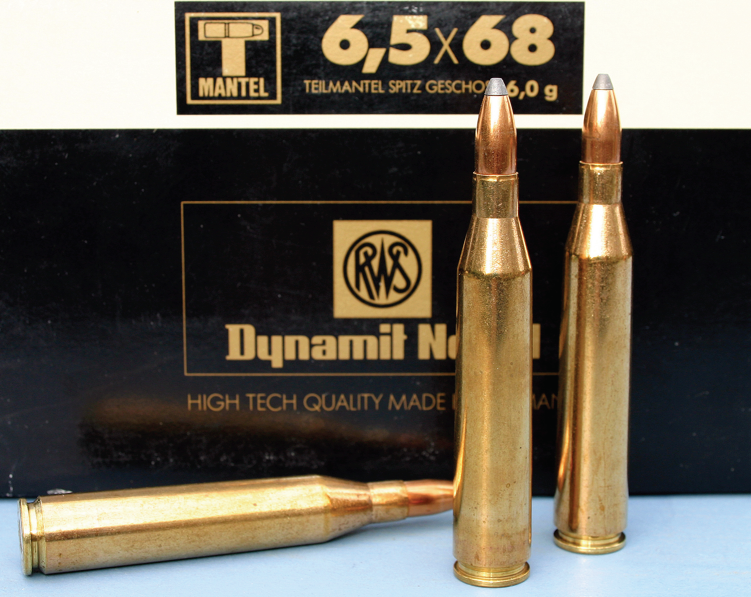
Prior to WW2, there had only been a single American attempt to produce a 6.5, the brilliant cartridge designer and riflemaker Charles Newton with his eponymous 256 design of 1913 which used a shortened and necked-down 30-06 case. The Western Cartridge Company loaded ammunition for Newton, a 129gn expanding bullet at a claimed 2760 fps MV and obtained in a longer barrel than those fitted to production rifles.
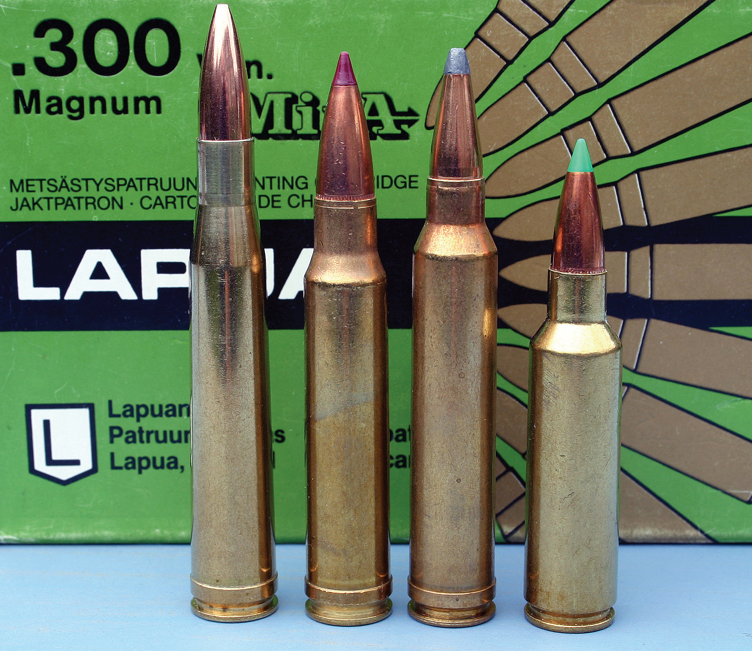
A few wealthy sportsmen and their expensive imported European rifles aside, Americans generally avoided metric-designated cartridges, with the possible exception of 7X57mm Mauser, until quite recently. The Italian 6.5X52mm Mannlicher-Carcano was an early post-WW2 arrival in what eventually became a flood of cheap surplus military rifles and ammunition. However, unlike the later Swedish 6.5X55mm M1894 carbines and M1896 rifles it wasn’t a great ambassador for the calibre. With a cheap and nasty riflescope tacked on, Carcano carbines and short rifles were sold as dirt-cheap hunting tools alongside surplus military ball ammo that had been rebulleted with soft-points – only the Carcano used 0.267” dia. projectiles and their replacements were some four thou’ undersize!
Despite their being widely regarded as ‘inaccurate junk’, Lee Harvey Oswald used one such mail order Italian M91/38 short rifle to assassinate President John F. Kennedy in Dallas on 22nd November 1963. The official investigations into the assassination concluded that Oswald was the sole assassin using this rifle and surplus 162gn FMJ cartridges firing from an upper floor of the Texas School Book Depository as the president’s motorcade passed. Many ‘experts’ declined to believe this saying it was impossible to get three aimed shots off with this combination in six seconds, moreover accurately enough to obtain two hits on a moving target – hence the various multiple alternative gunman/gunmen, ‘grassy knoll’ etc theories that survive to this day.
Magnums
World War 2 had seen intensive propellants development resulting in a wider range of powders better suited to smaller bore/larger case-capacity cartridges being available afterwards. Once the transition back to a peacetime economy had taken place, an increasingly well-off American public proved willing to spend money on shooting products, leading to the marketing-led development of a torrent of new designs, both firearms and the cartridges they consume.
The 1950s saw some new smaller rifle cartridges typified by two very successful and influential designs, Winchester’s 243 and Remington’s 222, but this was really the era of the ‘short magnums’. Eh?, aren’t the SAUMs and WSMs much more recent than that? They are indeed but the original ‘short magnums’ were so called as they were exactly that in relation to traditional British (H&H etc) designs. The issue was that the Winchester Model 70 action and its Remington equivalents had been designed around the 30-06 /270 Win 3.34” COAL and the older belted magnums had nominal lengths around 3.6”, so expensive, difficult to source custom Mauser ‘magnum actions’ were needed to accommodate them.
Winchester introduced a quartet of magnums between 1956 and 1963 in 300, 338, and 458 bores that fitted standard (what we now call ‘long’) US made actions. Number three in the series was America’s first 6.5mm cartridge in 40 odd years since the 256 Newton, the 264 Winchester Magnum unveiled in 1958. Remington introduced three belted magnums in this period, its wildly successful 7mm (1962); and two ‘lemons’ – the 350 and 6.5mm (1965 and 66). So, after ignoring the calibre for the best part of 75 years, the big US ammo companies introduced competing magnum versions within the space of seven years.
Woods and Prairies
Whilst the successful 7mm Remington Magnum conformed to the pattern introduced by Winchester, a 2½-inch case and 3.3” overall length, its other two (6.5mm and .350”) newcomers were what we’d now call true ‘short magnums’ at 2.8-inch COALs and were chambered solely in an extra-cost laminated wood stock ‘Magnum’ version of the recently introduced Remington Model 600 (later versions renamed M660 Carbine and Mohawk).
The ‘600’ was a strange short rifle which initially came with an 18½-inch barrel; plastic bits such as the trigger-guard/floorplate and a ghastly barrel rib; a repeating version of the Remington XP100 long-range pistol action complete with a clunky ‘dog-leg’ shape bolt handle like that on the old P’14 and M1917 military rifles. Available in a good range of cartridges and no mean performers, these rifles never sold better than ‘moderately’ almost entirely thanks to their looks. Whilst the 350 Magnum is now regarded as a fine heavy game woods cartridge that deserved success, its pairing with the Model 600 ‘ugly duckling’ guaranteed a short commercial life, nor did its ferocious recoil and muzzle blast in the light, short-barrel carbine help its prospects!
However, putting a 6.5mm magnum cartridge into this little rifle apparently defies logic, the short COAL restricting bullets to 120gn maximum (and seated over-deeply at that), the calibre’s flat-shooting, effective long-range ballistics unneeded in a short-barrel thick-cover woodland rifle. If the 600 and its successors struggled to appeal to deerhunters, the M600 and 660 ‘Magnums’ faced a harder task. Ironically, almost as soon as Remington dropped the 600 series, it became a ‘cult rifle’ with collectable status and the rarer the individual model, the higher its value. Since not many Magnums were sold, they’re much sought after!
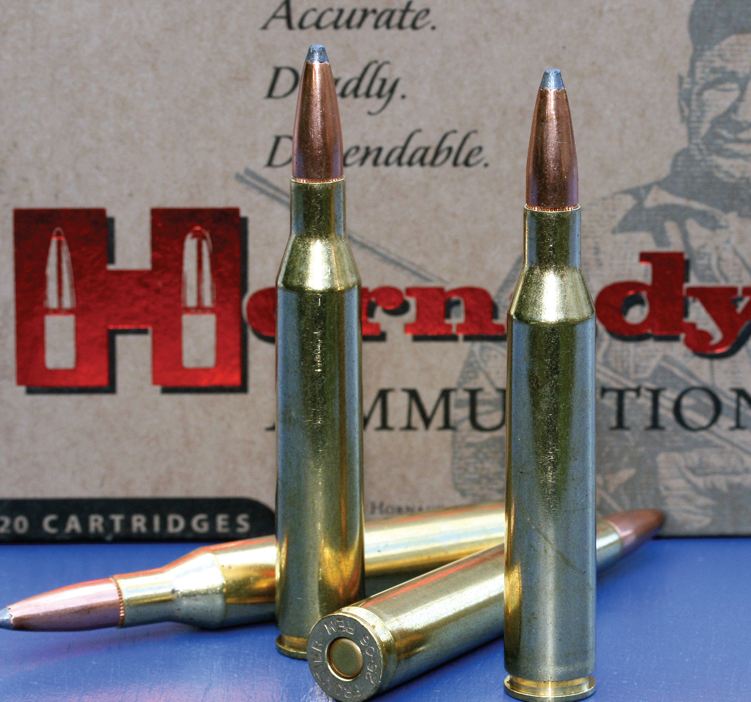
Winchester did the job properly seeing its 264 Magnum as a long-range open country cartridge, marketing it to those who dreamt of prairie pronghorn antelope, high country elk, or mountain sheep ‘hunting’ expeditions and pairing it with a new and beautifully finished, almost factory custom version of its long-action Model 70, the 26-inch barrel ‘Westerner’. This was/is a seriously ‘hot’ cartridge which is borderline over-bore capacity even with today’s very slow burning and ‘progressive’ magnum cartridge propellants. So, it really was an over-bore capacity number back in 1958.
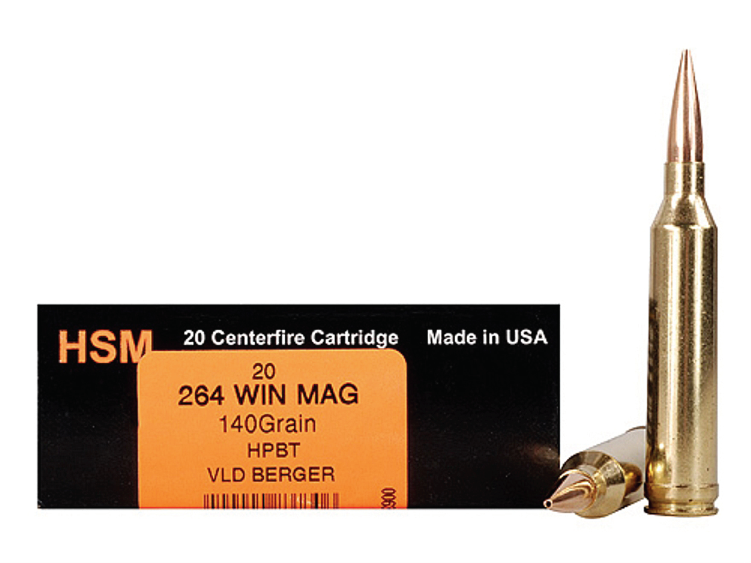
To put it into context, if you take the 6.5X55mm as a baseline, its case holds around 58gn water; the 6.5-284 Norma that many regard as having as large a case as is sensibly usable (and isn’t noted for long barrel life) runs at 66gn, and the old 264 Winchester 82gn – a bit more than current WSMs. It’s rated at 64,000 psi MAP chamber pressure by SAAMI – a hot number almost up with today’s magnums.
As with all such rifle ‘magnum’ case designs of that era, it has a belt, the term and belted case then synonymous. It really caught the imagination of contemporary American shooting writers and those amongst the shooting public who followed such things, especially with Winchester’s inflated claims made for its ammunition (3300 fps plus for 140s) but, after a promising start, it quickly fell out of favour. This was for three reasons. Firstly, this was a true ‘barrel-burning’ magnum. (Hornady wore out three test barrels developing loads for three bullets with a small range of powders.) Second, unlike RWS and others in Europe, the American lack of interest in the 6.5mm calibre had seen domestic manufacturers offer limited bullet ranges and those expanding designs that were available were often insufficiently robust for the Winchester Magnum’s terminal speeds, especially on tough game like elk.
However, it was Remington that really killed this hot 6.5 off – its 7mm Magnum introduced three years after Winchester’s cartridge was almost as flat-shooting, worked out to almost as long ranges, but offered larger calibre heavier bullets weighing up to 175gn. After staggering on for some years, the 264 died, to be resurrected as a factory cartridge in 2001 when American interest in 6.5mm grew and powders/bullets improved. (Ironically, it was Remington which restarted ammunition manufacture, also briefly chambering the cartridge in its 700 Sendero SFII rifle).
Names
Let’s look briefly at names and numbers. The European metric designation is 6.5mm. Divide that by 25.4 to turn it into inches and you get 0.256”. This is the nominal bore (land) diameter and in accordance with the now largely unused British convention, would see such a cartridge designated 0.256” calibre – which is why we Brits once called the 6.5X54mm and 6.5X53R in their sporting personae, the ‘256 Mannlicher’ (specifying rimless or rimmed). Groove diameter is usually somewhere between 0.263” and 0.264”, and bullet diameter likewise (actually 6.7mm for the full 0.264”), although there are exceptions such as the 6.5X52mm Mannlicher-Carcano which needed bullets somewhere in the 0.267-0.268” bracket.
Newton used the British/early 20th Century US convention too – quoting bore rather than barrel groove/bullet diameters with this 1913 proprietary design but, Winchester used the Imperial measure of the latter with its ‘264’. No doubt one reason for this was to reduce the longstanding confusion amongst American shooters between this foreign calibre and their home-grown ‘quarter-bore’, ie .25-inch calibre cartridges. With the 25s using 0.257” dia. bullets, cartridges often so named such as the 257 Roberts, and 6.5s sometimes referred to as a 256”, this is hardly surprising and degraded perceptions of the 26s in terms of available bullet weights and effectiveness on medium/large game.
In modern times, the generic 6.5mm is the most widely used name although as recently as 1997, Remington called its new small 6.5mm design the 260 Remington rather than by its proper title, the 6.5-08 (ie the 308 Win necked-down to 6.5mm). ‘260’ is neither good fish nor fowl and was an apparent attempt to avoid frightening the (American) natives with funny foreign designations.
Big Boys
An oddity is the relative scarcity of small capacity 6.5s until recently. There were a handful of European short-range target and pest rounds in the calibre in the early days of breechloaders, few of which survived the transition to smokeless powders and fewer still the 1914-18 war. The smallest of the 19/20th century military cartridges, 6.5X50mm ‘Arisaka’ and 6.5X54mm M.S. have water capacities of 45gn and 50gn respectively bracketing that of the 6.5X47mm Lapua – but the modern design runs at much higher pressures so it’s not a direct comparison.
American designs were all much larger capacity until the 260 Rem appeared. There still seems to be a hankering after supersize sporting 6.5s in the USA, presumably to get the ultimate in flat trajectory and long-range killing power. Art Alphin got his take on the longstanding 6.5mm-06 (ie 6.5/30-06) wildcat accepted by SAAMI in 1997 as the 6.5-06 A-Square. Then Nosler introduced the yet larger 26 Nosler just a couple of years ago. It’s an obese rebated-rim magnum whose case holds 93.5gn water according to Nosler. That’s 12gn (15%) more than the WSMs and some 27.5gn / 40-odd percent more than the 6.5-284!
Strangely, the calibre has been largely ignored by BR aficionados, ‘BR’ as in the little BR Remington (latterly Norma) cartridge and case, although its fans have used it widely in .22, 6mm, 7mm, and .30 forms, and nowadays even in 20. If you Google ‘6.5mm BR’, you will get some ‘hits’ with a few people apparently shooting it in American 200-yard BR comps with light (~80gn) bullets vice the 6PPC or .30BR, and a handful having tried it in heavy-bullet form for long-range benchrest – the success of the 6mm Dasher and 6.5X47mm Lapua have likely killed that off.
All Change
So what changed attitudes – especially American ones – towards the calibre? (Or, for that matter have they really changed? There is a view amongst some knowledgeable American sporting gun writers such as Craig Boddington that while the US target shooting community has maybe finally picked up 6.5mm, it’s still unloved and ignored by the vast majority of deer and other game hunters.)
If perceptions have really changed, the large exodus of surplus Swedish 6.5X55mm service rifles, nearly all in good condition, from the 1970s to 90s did most of the groundwork. They spread across Western Europe, the Americas and ‘Down Under’, prized everywhere by historic arms shooters, but also in demand from plinkers and those Philistines who attempt to convert good quality military longarms into ‘sporters’. With little surplus ammo to be had, the US ammo manufacturers were incentivised to pick this one up and run with it so it is now well catered for when you add longer established European producers in. It also encouraged manufacturers to add new 6.5mm bullets to their product ranges.
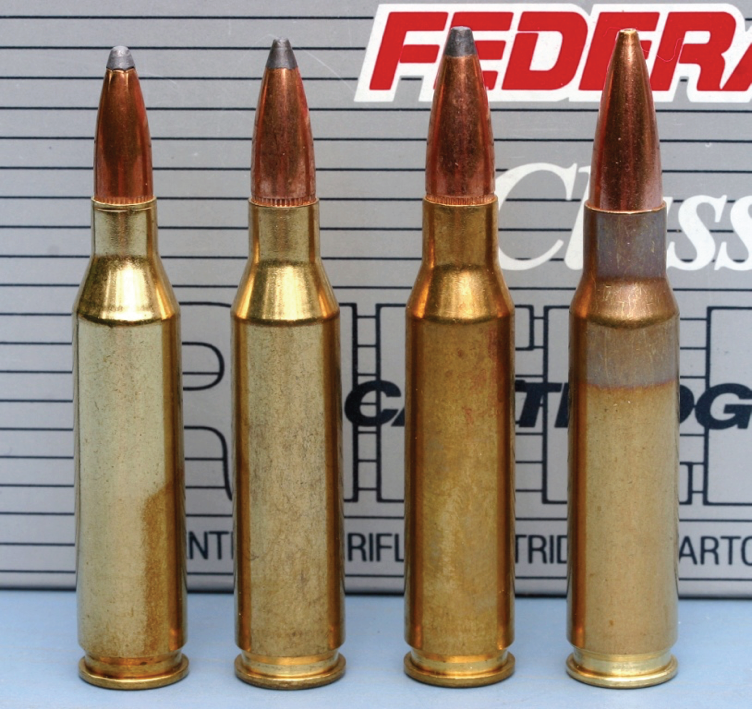
There were two very different competition orientated drivers too at play across the pond. One was ‘Metallic Silhouettes’, an import from Mexico. This was a real biggie in the States thirty years ago, offhand shooting at steel ‘chickens’, ‘pigs’, ‘turkeys’, and ‘rams’ in that order from 200 to 500 yards for the fullbore rifle version. This is a very demanding discipline for competitor, rifle and ammunition, requiring a light-recoiling, flat-shooting cartridge with high-BC bullets that retain enough energy to knock heavy ‘rams’ over. (A hit that rocks the silhouette earns you precisely zilch!) The default match cartridge of the era, 308 Win, was a bit punchy, so 6.5 and 7mm ‘wildcats’ based on its case and using 140gn bullets came into widespread use. With others adopting them for ‘deerhunting’, their growing impact and regular coverage in American shooting magazines eventually gave us the 260 and 7mm-08 Remingtons.
The other was a very different discipline, sometimes called ‘Conventional Long Range Prone’ shooting. Think of our Target Rifle, shot prone off the elbows with a rifle sling as the sole rifle-support accessory but with any cartridge allowed (‘any caliber’). There are two sub-classes based on sights: ‘iron’ or ‘any sights’ (in effect, match iron plus riflescope). The highlight of this discipline is the 2+20 shot 1000 yard Wimbledon Cup Match for Any Sights rifle competitors in the USA’s annual ‘National Matches’ at Camp Perry. With breaks for the two world wars, this prestigious competition has been run every year since 1875 to the present, but it was in 1935 that the rules changed to allow cartridges other than the 30-06.
Taking advantage of this, Ben C. Comfort used a Griffin & Howe custom-built match rifle chambered in 300 H&H Magnum to win with a score of 100.14v. This started a trend towards 30 Magnums in the discipline which lasted for many years, the wildcat 30-338 popular from the 1960s but many adopting the still more powerful 300 Winchester Magnum after its introduction. If you’re interested in the Ben Comfort story, here’s a link to a German Salazar feature from his now defunct A Rifleman’s Journey blog:
http://www.brasblog.info/article/594350451/history-ben-comfort-1935-wimbledon-cup/
(Don’t ask me how come it’s now to be found in a blog about ladies’ undergarments!)
People used these large cartridges to push heavy Sierra MatchKings out at 2800-2900 fps MVs. Think about that for a minute. F-Class competitors tell you that they have difficulties shooting the 300WSM with 215s or 230s and retaining the required degree of precision, 7mm cartridges and 180gn bullets trading slightly poorer ballistics for better rifle control on the rest and rear-bag and that’s in fully supported 22lb rifles.
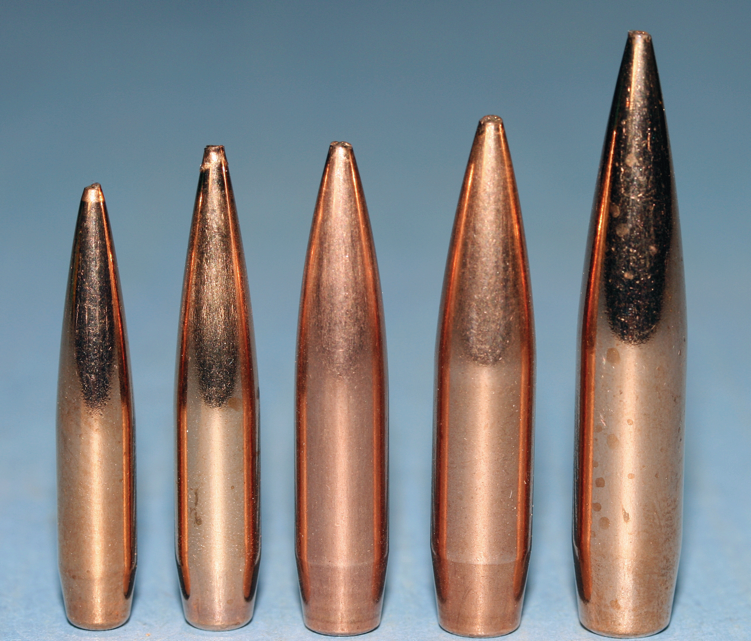
So, how did shooters cope with the 300 Win Mag and 220s or 240s in much lighter pieces shot off the elbows? They actually shot very well but suffered random ‘elevation fliers’ that users put down to ammunition induced variations. It eventually dawned on them that heavy recoil was the problem, magnifying small inconsistencies in the rifle ‘hold’ as well as inducing early shooter fatigue.
Switching to 6.5mm was an obvious response and after a false start with the old barrel-burning 264 Winchester Magnum, somebody remembered the 1960s era 284 Winchester, a commercial flop in factory loadings but whose case was an ideal base for ‘wildcats’. Necked down to 6.5mm and with barrels throated for the 142gn Sierra MK bullet at 2800-3000 fps MV it offered a combination of superb precision and external ballistics with much lighter recoil. Ah, and you thought it was F-Class that discovered the 6.5-284!
Put these diverse trends together and Remington eventually went to SAAMI with the chamber and cartridge specifications of a mid-capacity 6.5mm-08 – only it wasn’t Remington who arrived first on SAAMI’s doorstep to register such a design but that’s a another story for Part 2, when I look at the half dozen 6.5s in regular use amongst rifle competitors. In any event, we now have an excellent choice of 6.5mm cartridges and a large and still growing selection of superb match bullets in the calibre to tempt handloaders. Putting the many 6.5mm ‘wildcats’ and various extreme barrel-burners to one side, we have six usable competition designs providing a large performance envelope and all bar one introduced in the last 20 years. Moreover, whilst two are Scandinavian in origin, four started life in the ‘Land of the Free’ whose shooters and manufacturers have apparently finally ‘discovered’ the calibre’s benefits.
Table 1 – 6.5mm Military Cartridges
[table id=1 /]
All cartridges are rimless except for the 6.5X50mm Japanese ‘Arisaka’ (semi-rimmed) and the 6.5X53R Dutch / Romanian Mannlicher (rimmed).
Nominal MVs are for military loads from 29-30.5” long rifle barrels. The 6.5X55mm Swedish Mauser has two loadings: the original m/94 with a 156gn RNFMJ, and the revised 1941 m/41 139gn FMJBT.
Table 2 – American 20th Century Sporting 6.5s
[table id=2 /]
To be continued…

